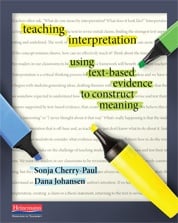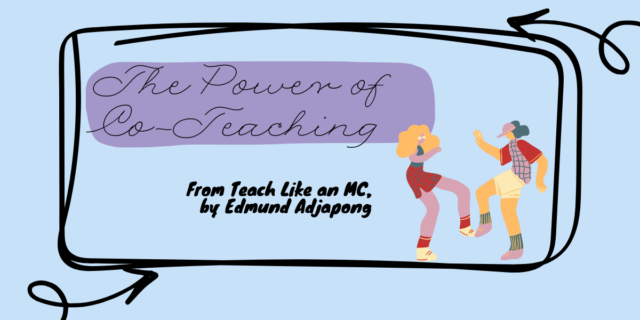
In today's blog post, authors Sonja Cherry-Paul and Dana Johansen argue that standards for close reading have led to a decreased emphasis on student inquiry. What happens when teachers leave room for questioning?
The Power of Questioning
by Sonja Cherry-Paul and Dana Johansen.
Recently, we’ve noticed that something is missing in the conversations surrounding close reading: Questions. Teaching has been dominated by talk about close reading strategies that help students arrive at answers about texts. But what about the students’ questions?
In these standards driven times, has an emphasis on close reading resulted in a de-emphasis on questions raised in response to reading? The underlining, annotating, and making note of specific words and phrases are close reading strategies that can help students comprehend complex texts. However, it seems the basis of whether or not students comprehend well is hinged on their answers to text-based questions. In this standardized, “close-reading world” that values strategies and leads to specific, pre-determined conclusions, is there room for questioning?
Close reading can help students, and teachers, determine comprehension gaps. It provides opportunities to teach strategies students can use to recognize when meaning has broken down and how to repair such misunderstandings. However, it seems that the power of questioning has been undervalued. Asking questions is an essential part of active reading. Educators such as Stephanie Harvey, Anne Goudvis, Chris Lehman, Kate Roberts, Richard Allington, and many others recognize questioning as a higher-level thinking strategy that strengthens comprehension and turns students into critical readers. Therefore, it is important to broaden the narrative around close reading from simply what students do to find accuracy when answering a text, to what helps students to monitor their own comprehension and spark their own inquiries.
Taking a questioning stance toward complex texts enables students to read beyond the text.
An emphasis on questioning, as part of the close reading work students do to read stronger, is essential. Taking a questioning stance toward complex texts enables students to read beyond the text; to speculate, critique, and hypothesize. Such work can lead to more complex questions. For example, in response to reading several chapters of Sugar by Jewell Parker Rhodes, a 6th grade student wrote the following questions in her reader’s notebook: What does freedom really mean? How it is that a person can be free, but not-free at the same time? This student was thinking deeply about the main character, a young African-American girl living in the late 1800’s after slavery was abolished. She was grappling with the concept of freedom, and her questions helped her to realize that freedom is more than the opposite of being enslaved; it’s about being able to control one’s own destiny. In an effort to gain new understandings, she researched and read about the Reconstruction Period and the significant new challenges it brought about for African-Americans. When students are encouraged to include questioning as part of close reading, they are inspired to pursue their own inquires, which leads to more reading! Research supports that we as teachers must be as concerned about increasing the volume of reading for our students as we are about the strategies to teach them to read. Getting our students to read more is the single most powerful thing teachers can do to help our students become better readers.
Honoring students’ questions leads to inquisitive students who make their own choices, pursue their own inquires, and find enjoyment in reading. Therefore, a shift away from teaching close reading strategies that simply leads students to answers, to teaching close reading strategies that encourage and emphasize questioning is essential.
♦ ♦ ♦ ♦
 Sonja Cherry-Paul and Dana Johansen are the authors of Teaching Interpretation: Using Text-Based Evidence to Construct Meaning. Together, they run the website LitLearnAct, a collaborative blog for literacy teachers. Follow them on Twitter @LitLearnAct.
Sonja Cherry-Paul and Dana Johansen are the authors of Teaching Interpretation: Using Text-Based Evidence to Construct Meaning. Together, they run the website LitLearnAct, a collaborative blog for literacy teachers. Follow them on Twitter @LitLearnAct.


